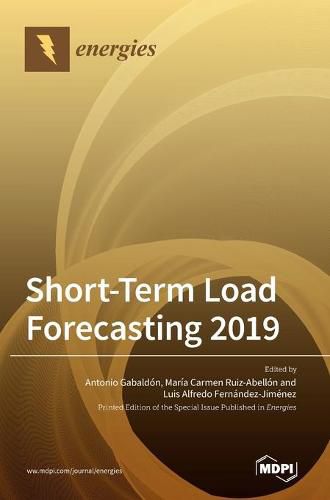Readings Newsletter
Become a Readings Member to make your shopping experience even easier.
Sign in or sign up for free!
You’re not far away from qualifying for FREE standard shipping within Australia
You’ve qualified for FREE standard shipping within Australia
The cart is loading…






This title is printed to order. This book may have been self-published. If so, we cannot guarantee the quality of the content. In the main most books will have gone through the editing process however some may not. We therefore suggest that you be aware of this before ordering this book. If in doubt check either the author or publisher’s details as we are unable to accept any returns unless they are faulty. Please contact us if you have any questions.
Short-term load forecasting (STLF) plays a key role in the formulation of economic, reliable, and secure operating strategies (planning, scheduling, maintenance, and control processes, among others) for a power system and will be significant in the future. However, there is still much to do in these research areas. The deployment of enabling technologies (e.g., smart meters) has made high-granularity data available for many customer segments and to approach many issues, for instance, to make forecasting tasks feasible at several demand aggregation levels. The first challenge is the improvement of STLF models and their performance at new aggregation levels. Moreover, the mix of renewables in the power system, and the necessity to include more flexibility through demand response initiatives have introduced greater uncertainties, which means new challenges for STLF in a more dynamic power system in the 2030-50 horizon. Many techniques have been proposed and applied for STLF, including traditional statistical models and AI techniques. Besides, distribution planning needs, as well as grid modernization, have initiated the development of hierarchical load forecasting. Analogously, the need to face new sources of uncertainty in the power system is giving more importance to probabilistic load forecasting. This Special Issue deals with both fundamental research and practical application research on STLF methodologies to face the challenges of a more distributed and customer-centered power system.
$9.00 standard shipping within Australia
FREE standard shipping within Australia for orders over $100.00
Express & International shipping calculated at checkout
This title is printed to order. This book may have been self-published. If so, we cannot guarantee the quality of the content. In the main most books will have gone through the editing process however some may not. We therefore suggest that you be aware of this before ordering this book. If in doubt check either the author or publisher’s details as we are unable to accept any returns unless they are faulty. Please contact us if you have any questions.
Short-term load forecasting (STLF) plays a key role in the formulation of economic, reliable, and secure operating strategies (planning, scheduling, maintenance, and control processes, among others) for a power system and will be significant in the future. However, there is still much to do in these research areas. The deployment of enabling technologies (e.g., smart meters) has made high-granularity data available for many customer segments and to approach many issues, for instance, to make forecasting tasks feasible at several demand aggregation levels. The first challenge is the improvement of STLF models and their performance at new aggregation levels. Moreover, the mix of renewables in the power system, and the necessity to include more flexibility through demand response initiatives have introduced greater uncertainties, which means new challenges for STLF in a more dynamic power system in the 2030-50 horizon. Many techniques have been proposed and applied for STLF, including traditional statistical models and AI techniques. Besides, distribution planning needs, as well as grid modernization, have initiated the development of hierarchical load forecasting. Analogously, the need to face new sources of uncertainty in the power system is giving more importance to probabilistic load forecasting. This Special Issue deals with both fundamental research and practical application research on STLF methodologies to face the challenges of a more distributed and customer-centered power system.